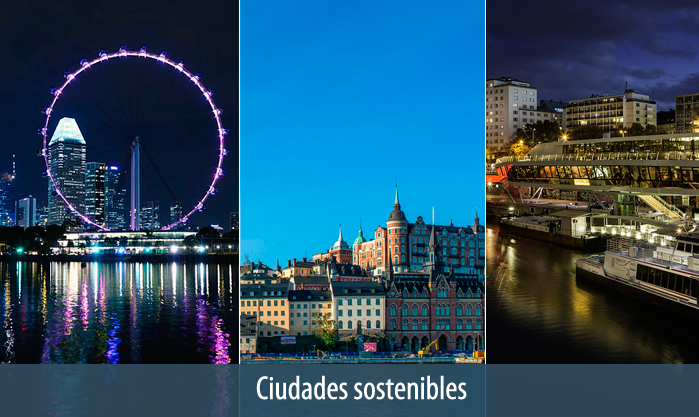A sustainable city is one that offers a high quality of life to its inhabitants by reducing its environmental impact and is able to sustain its economic growth and carry out its urban functions. This model of city must have 4 dimensions:
– Environmental sustainability and climate change: it must primarily address the management of natural resources, elimination of greenhouse gases and other forms of environmental pollution to re-establish the effects of climate change.
– Sustainable urban development: control the growth of the population and promote the provision of a habitat suitable for the citizens and to promote sustainable urban mobility and transport.
– Economic and social sustainability: promote local economic development and delivery of quality social services. In addition, a sustainable city should promote adequate levels of citizen security.
– Fiscal Dimension: For a city to be sustainable, it must apply adequate mechanisms of good governance, revenue and public spending and proper debt management and other fiscal obligations.
After having clarified what is a sustainable city and the pillars on which it is based, here is a list of the 10 most sustainable cities considered by the study Sustainable Cities Index 2016. It includes 20 sustainable cities among which 16 are European cities:
– Zurich: It is the seat of some important financial institutions globally. Their concern for the environment and its great quality of life make it ranked number 1 of sustainable cities 2016.
– Singapore: It is considered to be one of the economically strongest cities in the world. Sustainable Cities Index 2016 stressed the problem of ageing population of this city, which will require greater investment in social and health infrastructure.
– Stockholm: It is the political, cultural, and economic center of Sweden and world leader in environmental sustainability.
– Vienna: The city has one of the largest ecological farms of Austria. More than 860 acres of organic farmland are administered on three farms in the city.
– London: Despite the Brexit, it remains an economic powerhouse, with the ability to continue to develop its own sustainable infrastructure. It must demonstrate that it has not changed its priorities on investments in renewable energy projects.
– Frankfurt: It is presumed to be a financial and commercial center that has 8,000 hectares of forest. In 2014, it obtained the title of “European city of the trees”. It has managed to reduce by 15% per capita gas emissions thanks to the promotion of the use of the bicycle. Local authorities hope that by 2050 all energy comes from renewable sources.
– Seoul: It is the first in social sustainability although it needs to improve in economic and the environmental areas. “By 2015, it won the world title from the WWF city challenge “Earth hour.”
– Hamburg: It is one of the green referents of European cities. It is among the first cities in environmental sustainability, with more than 4,700 hectares of forest 100 years ago. From the private sector, more than a thousand projects have been carried out with voluntary investments in energy efficiency and responsible use of resources.
– Prague: It is one of the richest EU regions. The analysis shows an imbalance in income per capita of the inhabitants of Prague with respect to that of the rest of the Czech Republic, which is one of the key local indicators of sustainability and quality of urban life.
– Munich: In 2050 Munich plans to be a 100% renewable energy city. Sustainability in this city has grown at a good pace. In 2014, Munich’s green energy accounted for about 37% of its total demand, but the wind projects it launched enabled the city to have 80% of the energy consumed by 2015 from renewable sources.
These are the top 10 sustainable cities in 2016. Which other sustainable cities would you add to the list? Would you change the position in the ranking of any of them?


Leave A Comment